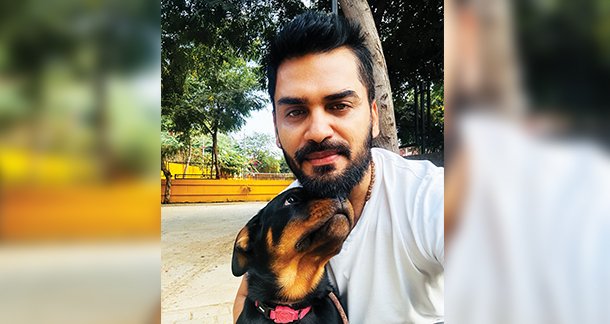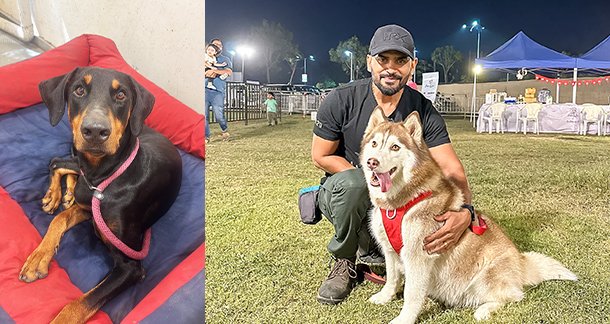Rescue Dogs can make excellent pets. It requires lots of patience and time in many cases.
Rescue dog behavior issues often stem from past trauma or lack of socialization. As a result, they can develop certain logical coping behaviors based on how their previous life worked. Compassionate adoptive parents try to understand the situation of rescue dog. And it will take some time for dogs to learn that they’re not in that life anymore. But you may see ongoing.
- Flinching when people approach, especially holding objects
- Resource guarding (toys, food, or even spaces like a favorite spot on the couch)
- Excessive barking or whining due to anxiety
- Chewing and destructive behavior as a coping mechanism
- Growling
- Relieving themselves (pee & potty) in inappropriate places
Rescue dogs may also be malnourished and need to see a vet for conditions they developed as a result. Improving their nutrition is critically important for both dog health and bonding, as they learn that you care and give them the good stuff like high value treats or toys.

Let them settle in at their own pace. While most puppies are relaxed and inquisitive, adult dogs may be worried when they arrive at your home. You may find they hide at first and don’t seem to want to interact with you. Don’t worry – this is perfectly normal. To help them relax you should let them go at their own pace.
Allow them to spend time on their own without disruptions and come to you when they are ready. They may come over and look at you, sit nearby or drop a toy at your feet.
I strictly suggest to avoid any visitors to come home during this time and make sure it is calm and quiet, so they get familiar with their new surroundings in peace.
There are some key points listed below to consider when you start training a rescue dog.
- Be Ready for Unpredictability
Rescue dogs often carry “invisible” baggage—fear, anxiety, or just a lack of understanding about what life in a loving home should feel like. Training a rescue dog isn’t just about teaching them commands. It’s about building trust and creating a safe environment to thrive.
- Start Building Trust
Most rescues received some socialization at the shelter before adoption, so they’ve at least overcome one hurdle. But they may still be skittish.
Trust is built over time as the new family member learns that you act in predictable ways.
For Rescue dog, this meant creating a predictable routine. Dogs thrive on structure. Every day, you must follow the same schedule: meals at the same time, walks in the same places, and consistent rules (like no jumping on the couch, no matter how cute he looked).
- Give Them a Safe Space
Crate training is one of the first rescue dog training commands I recommend. When presented to a dog correctly, a crate becomes like a wolf’s den is to a wolf. It’s a warm, cozy place where they feel safe.
The same principles apply to a rescue dog. But in rescue dog’s case, there was no way he was going in a crate—probably because of bad experiences. So, I will teach him a simple place command.
Flexibility in training a rescue dog is important.

- Use Positive Reinforcement for Rescue Dog Training
It’s essential never to use punishment for rescue dog behavior issues. It destroys trust, and often, it’s more of what the dog was used to in its previous home.
I keep treats in training pouch which I can carry on myself all the time. It makes rewarding him quickly and consistently easier.
Positive reinforcement became my secret weapon in training Bruno. Every time he did something “constructive”—whether it was sitting calmly when I put on his leash or not barking at the neighbor’s cat—he got a reward. And when I say “reward,” I don’t just mean praise or a pat on the head.
I mean treats — small enough that I’m not running his dinner but irresistible enough that he starts making the connection between certain behaviors and rewards.
- Choose High Value Dog Treats
The right treats make all the difference. High-value dog treats, were exactly what I needed to help Bruno turn a corner. These healthy, protein-packed treats got his attention fast and kept him motivated during training sessions.
While lung bites are great for quick rewards, more substantial dog treats helped alleviate anxiety and boredom, so he became more receptive to training sessions.
- Keep Dog Training Sessions Short
Five to ten minutes of focused training is better than an hour of frustration for both of you.
Always try to end these short sessions on a high note. For example, when Bruno was struggling to learn the down, we returned to basic with “sit”. I rewarded him. And we ended the sessions with positive feelings he could carry into his next session.
- Begin Basic Training
Training your dog to perform basic skills on command builds trust and cooperation.
Commands like sit, down and go to Crate, etc., help your dog feel safe and stay safe.
Please seek a professional trainer help always when you are not sure how to start the process. It’s always helpful to hire a professional K9 trainer who can help your rescue dog and the family.
About Author
By Ketan Panchal

